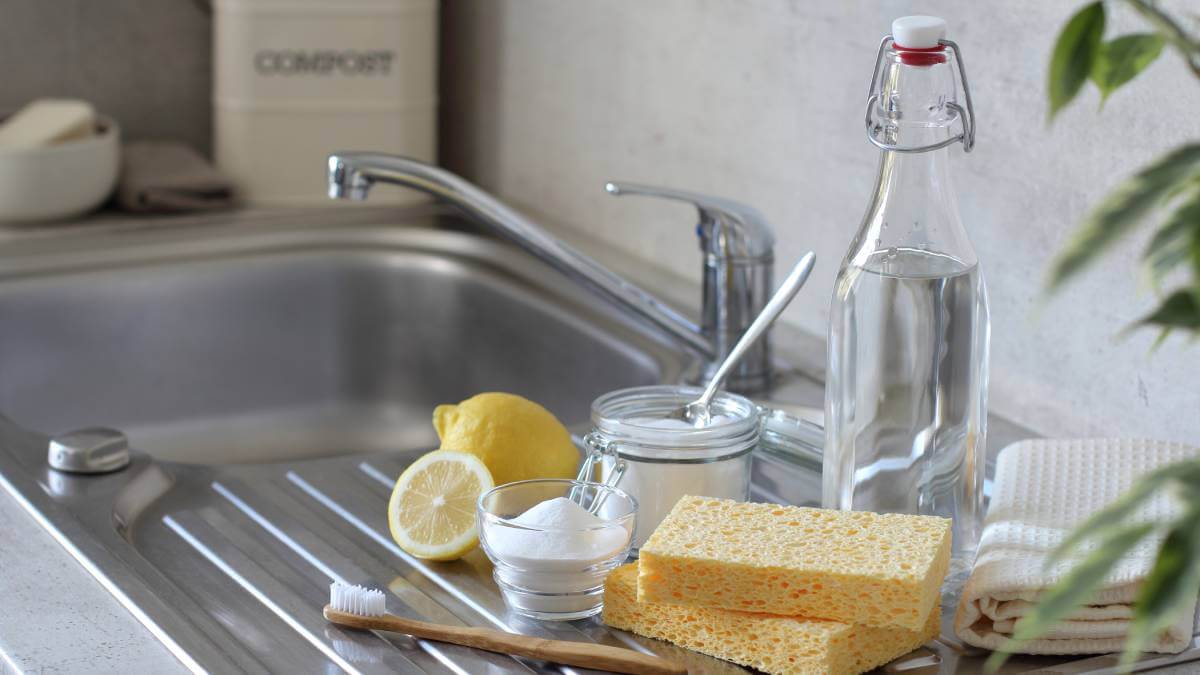The invisible layer of chromium oxide covering the entire surface of stainless steel gives it the ability to resist stains and rust. However, this layer can get damaged and rust can form on the surface at the point of that damage. The good news is, with a little cleaning and care, the chromium oxide layer is self-healing.
Not only does rust ruin the appearance of the stainless steel, but it can also degrade its strength and performance over time.
Luckily, there are some simple ways to clean rust off your stainless steel and keep it looking and feeling new.
Try warm water
Most of the time, stainless steel rust can be removed with warm water and a little elbow grease. Simply rinse the pots or cutlery under warm water and clean them with a soft cloth. A drop of gentle detergent can make the job easier.
Sometimes, water contains mineral solids that can leave water spots so wipe thoroughly with a dry towel to keep the utensils looking their best.
It’s best to try warm water first before moving on to harsher solutions.
Baking soda
Baking soda is one of the first natural kitchen cleaners we think of when we need reliable cleaning power. Thanks to its mild abrasiveness and cleaning abilities, baking soda is perfect for cleaning stainless steel.
If you need to remove a rust ring from a stainless-steel sink, this pantry staple might be the way to go. You can even use it on stainless-steel appliances, silverware and tools.
Follow these steps for sparkling clean steel:
- Add one tablespoon of baking soda to two full cups of water.
- Use a toothbrush to rub the mixture on the rust. Baking soda is non-abrasive so it won’t scratch the metal, but it will help lift the rust.
- Rinse with water and wipe the rust with a paper towel until it’s fully removed.
Tomato sauce
It might seem odd, and a little gross, but tomato sauce is a great cleaning solution for stainless steel. The acetic acid in the sauce attacks the rust, breaking it down and making it easier to remove.
Simply apply a generous coating to the rust, leave for around 30 minutes, wipe it off with a soft cloth and rinse well. After rinsing, you may need to scrub the area with a sponge.
This solution works best on small spots of rust, not on utensils that are completely covered or corroded with rust.
If you don’t have tomato sauce in the house, vinegar will work in the same way.
Citrus
Another food item that works wonders at getting rid of rust when it first appears is citrus fruit, such as lemons and limes. You can add salt to the surface of your item for a more abrasive clean, before squeezing the citrus juice over it. Let the solution sit for a few hours before rubbing it off, rinsing, and drying your item.
Whatever you choose to do to remove rust, stay away from steel wool, steel brushes and any cleaner that contains fluorine, chlorine, bromine,and iodine (and any other elements in the chloride family). Chlorides are abrasive and will mar the surface of the stainless steel, making it susceptible to corrosion.
If you’re unsure, try out any abrasive powder in a corner of the utensil, where it will not be so noticeable, and see if scratches the surface.
For everyday upkeep – and to maintain that glow throughout your kitchen – wipe away smudges and fingerprints regularly with warm water and a mild detergent. Whenever you wash stainless-steel surfaces, always ensure you dry them properly. Remove standing water or leftover droplets with a clean, dry cloth, that way you will eliminate moisture before the rust has a chance to set in.
Do you have stainless-steel appliances in your kitchen? How do you keep them clean? Share your tips in the comments section below.

